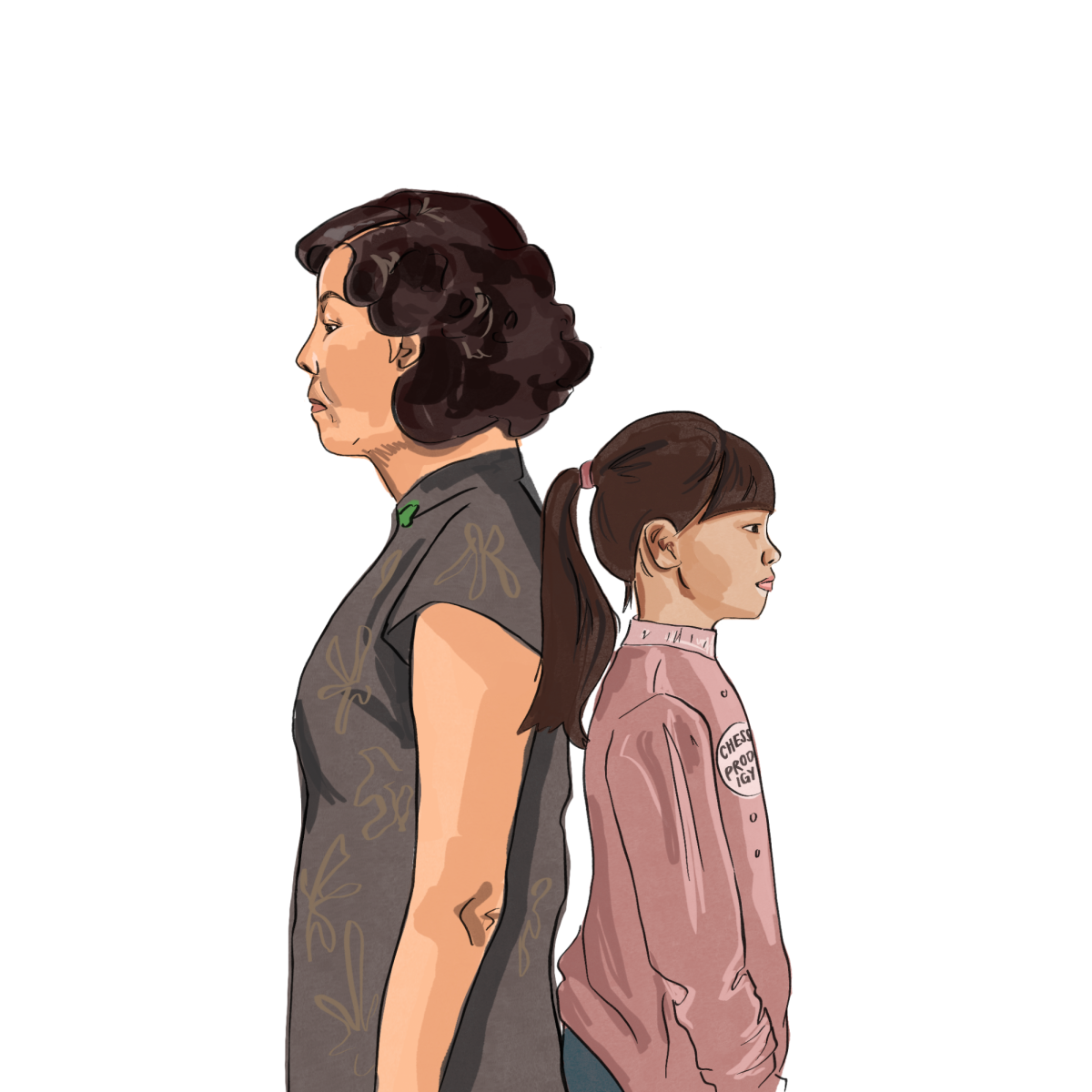Every other weekend for most of my childhood, you could catch my dad and me at the Stanford women’s basketball game, sitting somewhere on the upper levels with a frozen pink lemonade between us. My household names of the 2010s included Kiana Williams, Haley Jones, Alanna Smith and the Hull twins. I never really wondered about the men’s team — for a time, I assumed Stanford didn’t have one. Then I simply decided that they obviously weren’t as fun to watch as the women, and didn’t give the idea too much more thought.
Although this was the way I was brought into the world of collegiate basketball, the reality is quite the opposite. Much to the surprise of my 12-year-old self, women’s basketball at all levels has significantly fewer followers compared to men’s.
Since 2021, however, this narrative has begun to change. Over the past couple years, there has been an influx of new talent among collegiate women. Some of the biggest recent names — University of Connecticut guard Paige Bueckers, Stanford University forward Cameron Brink, University of Iowa guard Caitlin Clark, Louisiana State University forward Angel Reese and University of Southern California guard JuJu Watkins — bring so much talent and skill to the court that women’s basketball has become impossible to ignore.
In 2024, arguably the most famous of these names would be Clark. The 6-foot senior’s deadliness from the three-point line has consistently brought her national attention, but it wasn’t until she started smashing long-held records that her talent truly went viral. On Feb. 15, Clark broke the National Collegiate Athletic Association scoring record set by two-time WNBA national champion Kelsey Plum at 3, 527 points, scoring 49 points in one game to bring her total up to 3,569 points. If that wasn’t legendary enough, Clark went on to break the all-time scoring record of any woman or man in Division I basketball, set by Pete Maravich, a Louisiana State guard who went on to play in the NBA. His record had stood for 54 years at 3,667 points before Clark broke it by scoring 35 points against Ohio State University, bringing her tally to 3,684 points.
Needless to say, Clark is one of the most deco- rated women to ever pick up a basketball — and she hasn’t even started a professional career. Leading the Hawkeyes, Clark flushed the University of Connecticut out of the March Madness Final Four on April 5, ending senior Paige Bueckers’ college career. Bueckers, another icon of this current era, has been riddled with injuries for a large portion of her college career: She was out with a knee injury for most of her sophomore year, returning just in time to lead her team to a national champion- ship. There, Bueckers tore her ACL, leading her to miss her entire junior season. In her senior year, Bueckers has beaten the odds, proving she is still an elite player as the 2023-24 Big East scholar-athlete of the year, an Associated Press First Team All-American and a member of the U.S. Basketball Writers Association’s 2023-24 Women’s All-America Team.
Also on this All-American team is Stanford’s Brink. The 6-foot-4 senior is an absolute powerhouse inside the paint, her unmatched skill bringing her national attention. Selected as the 2023-24 Pacific-12 Conference women’s player of the year and defensive player of the year, Brink is just as decorated as Bueckers and Clark, and has led her team to many victories.
A new player on the scene, USC’s Watkins is carving her own path, showing endless potential in her freshman season. The 6-foot-2 guard is averaging an insane 27.1 points per game (in their freshman seasons, Brink, Bueckers and Clark averaged 9.9, 20.0 and 26.6 points per game, respectively). Although the Trojans did take a dive out of the March Madness Elite Eight to Bueckers and the Huskies, basketball fans can’t wait to see Watkins’ next season.
Whether it’s stewing over the next All-Star 3-point contest (possibly involving Caitlin Clark), or keeping an eye out for courtside Warriors guard Stephen Curry (who is the son of Dell Curry, Brink’s godfather) at the Maples Pavilion, collegiate women’s basketball is catching fire and no one can look away. However, this ground-breaking talent isn’t the only thing raising the audience numbers.
Women’s basketball has shown it has a flair that men’s basketball just can’t match, whether that be the unbelievable outfits Louisiana State head coach Kim Mulkey wears while leading her team, or the increased intensity of play. Being the animated coach that she is, it only feels right that Mulkey has the craziest style of anyone in the realm of college basketball, from bedazzled and feathered blazers to tiger-print suits. Countless videos of her circle the internet, with her screaming herself hoarse at a referee while the ruffled sleeves of her jacket shake and her pump heels click against the court. A true icon of women’s collegiate basketball, Mulkey is just one non-player aspect that keeps viewers wanting more.
As for the increased intensity of play, there’s been an uptick in physical altercations in women’s ball over the past couple years — and the publicity surrounding them. Not uncommon in men’s games, fights between players are a rarity in women’s games. As to be expected, the NCAA has a zero-tolerance policy toward unnecessary violence, but that doesn’t stop the fact that an explosion of emotion can sometimes be one of the most interesting parts of a game. Viewers (including myself) go wild for a good, juicy fight and love seeing passion and emotions running high on the court.
While March Madness may be over, with the University of South Carolina Gamecocks coming off an undefeated season to take the tournament win over Clark and the Hawkeyes, the fame of women’s basketball will continue growing. All eyes may be looking at the collegiate competition right now, but fans will follow these idols past graduation — Clark, Brink and countless other collegiate firecrackers have already declared for the WNBA draft on April 15, with Clark projected as the top pick.
My 12-year-old perception of the popularity of women’s basketball was plainly incorrect, but the tables are turning. A new era of basketball is upon us — one that brings women’s sports one step closer to the recognition that they deserve. One that lets little girls stand at the three-point line and not dream of being the next Stephen Curry, but the next Caitlin Clark.























